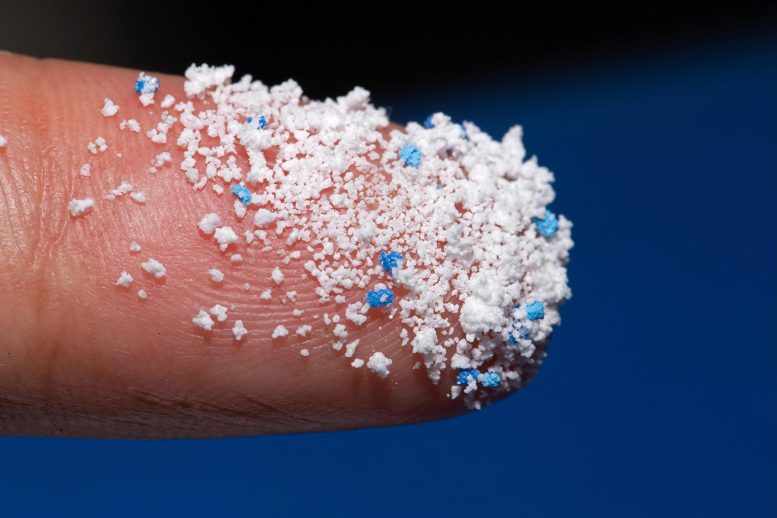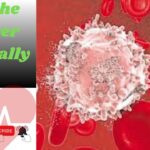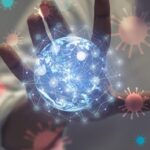Summary of Are You Eating Plastic? New Research Shows Serious Health Risks:
A recent animal study indicates that consuming nanoplastics is associated with altered metabolism and liver function. These tiny plastic particles, common in food and drinks, may disrupt glucose metabolism and harm organs such as the liver. The findings raise concerns about potential health risks in humans and emphasize the importance of further research.
*****
- Recent research reveals the presence of nanoplastics in food and drinks and their potential health risks.
- Animal studies indicate that nanoplastics may disrupt glucose metabolism and negatively impact liver function.
- The findings raise significant concerns about human health and the cascading effects of plastic consumption.
- The importance of understanding and addressing these risks cannot be underestimated for our future well-being.
- A proactive approach to reducing plastic exposure and advocating for broader environmental changes is essential.
In the quiet of a bustling café, as the world hums around us, we imagine sipping that inviting cup of coffee without a second thought about the mysterious journey it took to meet our lips. That is until a new revelation catches our attention like a splash of cold water to the face. It’s time to sharpen our focus and dig deeper into the ticking time bomb nestled in our food and drink: nanoplastics.
The Invisible Particles
Imagine something so small, it is virtually invisible, yet so pervasive, it sneaks into our food and water supply with stealthy precision. Enter nanoplastics—minute plastic shards born from the degradation of larger plastic debris. They seem innocuous, but their tiny size might be their greatest weapon, enabling them to wriggle their way into our digestive systems without as much as a pop-up warning.
Researchers have been unearthing the wayward paths these particles take, suspecting that they don’t just pass through our systems harmlessly. Like uninvited guests overstaying their welcome, they may disrupt crucial functions of our organs. This is not merely a curtain call—it’s a wake-up call for all of us to embrace curiosity and delve into the science behind this enigma.
Animal Studies: The Early Warnings
In the realm of science, animals often serve as our initial windows into the effects of environmental changes. Recent studies have shown that the ingestion of nanoplastics can wreak havoc on animal health. The spotlight shines on two critical aspects: metabolism and liver function. The results, in many ways, mirror a sleek thriller novel, with unexpected twists and revelations.
Researchers are observing significant disruptions in glucose metabolism—a key process that can suddenly play out like a real-life plot twist. Our bodies rely on precise glucose management for energy, and a shake-up here can ripple through every cell. Imagine a finely tuned orchestra suddenly losing its rhythm—chaos ensues, and the same could happen within us due to these seemingly trivial infiltrators.
Adding another layer to the plot, liver function is also seen under siege. This organ isn’t just a background player; it’s a vital powerhouse managing detoxification and nutrient processing. In animals, evidence points to increased liver stress and potential impairment, a state of affairs akin to a drama, casting potential shadows on human health.
Human Health Concerns
With a clear plotline unfolding in animal studies, the implications for humans loom large. The parallels between animals and humans often hint at shared vulnerabilities, and this is no exception. Might these tiny invaders dance unhindered through our bodies, leaving a trail of health implications?
The theories lead us down a path filled with questions: How does constant exposure to nanoplastics interfere with our delicate balance? What are the long-term consequences if we allow this story to unfold unchallenged? This investigative journey pushes us to delve deeper and explore solutions, compelling us to not just observe, but actively engage.
Reducing Plastic Exposure
Determined to reclaim the narrative, we face an array of opportunities and choices. Here, personal empowerment comes into play. Our everyday decisions can become weapons against plastic invasions. Whether it’s swapping out single-use plastics for sustainable alternatives, harnessing the power of collective movements, or advocating for new policies, we arm ourselves with tools to diminish plastic footprints.
Start with small, impactful changes. Imagine a scenario where each of us commits to reducing plastic use. The ripple effect could transform into a tidal wave of change. Picture community clean-up activities, awareness campaigns, and the sheer power of informed choices uniting people—a movement underlined by shared values and an unwavering spirit.
Advocating for Broader Change
While individual actions write essential chapters, this story gains momentum through advocacy and systemic change. Here lies a golden opportunity to challenge corporations and governing bodies—a call to rethink and redesign products, to promote research and development in waste management technologies. A challenge not just for individuals, but industries and governments alike, to innovate and collaborate.
This is our collective expedition into a future where we’re not bystanders, but active participants and changemakers. Engage in dialogues, encourage policies that support sustainability, support research initiatives, and hold entities accountable for the footprints they leave on our world.
The Vision Forward
The narrative isn’t solely about potential hazards; it’s also about forging a path woven with hope and resilience. It’s about unlocking the innate drive within us to protect what is precious, to nurture environments that foster health and harmony. Our journey is imbued with a simple truth: when we know better, we do better.
So, let’s savor each moment, each meal, not with worry but with awareness. Let this be an invitation to pause, think, and act. To envision a world where harmony with nature isn’t a subplot but the main theme we all contribute to with purpose and conviction.
In closing, let’s embrace the unknown with curiosity, lean into challenges with courage, and rewrite our relationship with the environment grounded in respect and stewardship. After all, the world we leave behind reflects the actions we choose today. Sharing this journey, we ignite a future that cherishes life, sustainability, and wellness—a narrative where each one of us holds the pen.


